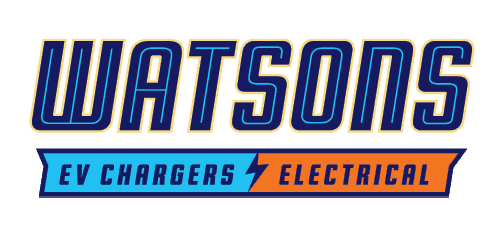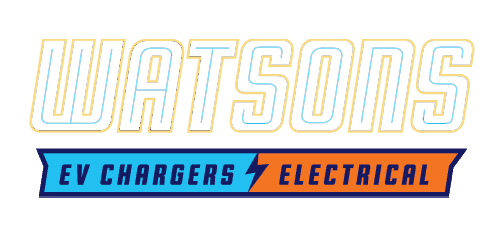Solar Power Changes the Way We Respond to Disasters
Natural disasters such as hurricanes, earthquakes, floods, wildfires, and tornadoes can cause widespread damage to infrastructure, property, and lives. According to a report by the National Oceanic and Atmospheric Administration (NOAA), there were 22 weather and climate disaster events with losses exceeding $1 billion each across the United States in 2020. These events affected millions who lost power, water, communication, transportation, and other critical services.
One of the most difficult tasks in disaster relief and emergency response is restoring power to affected areas. Without power, rescue operations are slowed, medical facilities can be compromised, food and water will become contaminated, and people might suffer from extreme heat or cold.
Fortunately, a renewable energy source can provide backup power when a traditional power supply is disrupted: solar power. Read on to learn more about solar power's critical role in disaster relief and emergency response.
Solar panels help capture and convert light from the sun into renewable energy.
How Is Solar Power Used During Emergencies?
Solar power converts sunlight into electricity using photovoltaic (PV) cells or solar panels. Solar power can be used for various purposes in disaster relief and emergency response:
Backup power for shelters
Communications
Lighting
Transportation
Water purification
Heating/cooling
Benefits of Solar Power during Disasters
Using solar power for disaster preparedness can provide several benefits over conventional fossil fuel generators or grid-connected systems.
Independence from the grid
Solar power does not depend on the availability or reliability of the grid. It can operate independently or as part of a microgrid, a small-scale network of energy sources that can function autonomously or connect to the main grid as needed.
A solar microgrid can provide power to isolated communities cut off from the grid due to natural disasters. It can also help reduce grid congestion and vulnerability by diversifying energy sources.
Portability
Solar power systems can be easily transported and installed in remote locations where access to fuel or grid infrastructure is limited or nonexistent. For example, solar-powered water pumps can provide clean water for drinking, sanitation, and irrigation in areas where water sources are scarce or contaminated.
Mobile solar generators can provide electricity for lighting, communications, and medical equipment in areas where roads are blocked or damaged.
Portable solar chargers can recharge batteries, phones, and laptops in areas where outlets are unavailable or overloaded.
Low maintenance
Solar power systems require minimal maintenance compared to fossil fuel generators that need regular refueling, oil changes, and repairs. Solar panels have a long lifespan of 25 years or more, and batteries have a lifespan of 5 years or more. Solar systems also produce no noise, dangerous emissions, or waste that could harm the environment or people nearby.
Solar power and microgrid systems require very little maintenance when compared to other utilities.
Versatility
Solar power systems can be customized to meet different needs and preferences in disaster relief and emergency response situations:
Solar panels can be mounted on rooftops, ground, or trailers depending on space availability.
Batteries can be sized according to load requirements.
Inverters can convert DC electricity from solar panels into AC electricity compatible with most appliances.
Controllers can regulate voltage levels.
Meters can monitor energy production and consumption.
Switches can disconnect from the grid as necessary.
Eco-Friendliness
Solar power is a clean energy source that does not contribute to greenhouse gas emissions, climate change, or air pollution, all of which can worsen natural disasters. Solar power also reduces dependence on fossil fuels that could deplete natural resources, increase geopolitical conflicts, or cause oil spills that could damage the environment.
Solar power is not only cost-effective, but it helps protect the environment.
Solar Power during Disasters: Case Studies
There are many examples of how solar power has helped communities recover from natural disasters around the world:
After Hurricane Maria devastated Puerto Rico in 2017, Tesla installed over 700 solar roofs on homes, hospitals, schools, and businesses across the island, providing reliable backup power during outages.
After Cyclone Idai hit Mozambique in 2019, SunCycles deployed solar-powered e-bikes to deliver food, water, medicine, and other supplies to remote villages inaccessible by car. E-bikes also served as mobile charging stations for phones and radios.
After the 2015 Nepal earthquake, We Care Solar installed solar suitcases in health facilities that lost power, enabling doctors and nurses to perform life-saving procedures such as deliveries, surgeries, and vaccinations.
After the 2011 Fukushima nuclear disaster in Japan, SolarAid distributed solar lanterns to families living in temporary shelters without electricity. The solar lanterns helped them cope with the dark nights and reduced their dependence on kerosene lamps that posed fire and health risks.
Be Prepared by Going Solar
While many homes and businesses are looking toward solar power to join the electrification movement, reduce utility costs, and help the environment, it is also a prudent move toward being ready for the next natural disaster. From earthquakes to intense lightning storms, the people of Gilroy, CA, in the Santa Clara Valley are no strangers to natural disasters or power outages. Creating a solar energy system or microgrid can put you in a better position to deal with power outages from natural disasters and emergencies.
Santa Clara County electricians, like Watson’s Charging Stations & Electric, are here to help. Professional electricians can contribute to your disaster plan in several ways:
Assessing site conditions, energy needs, and safety requirements for installing solar power battery backup and nanogrid systems
Maintain microgrids by cleaning, inspecting, testing, and troubleshooting them regularly
Inspect, repair, and restore microgrids after a disaster to ensure the system is ready for the next power outage.
Educate users on how to operate, monitor, and conserve energy via solar power microgrids
If you want to learn more about preparing your home or business for power outages, disasters, and emergencies, call Watson’s Charging Stations & Electric. We are the premier electrical group in the Gilroy, CA, and Santa Clara Valley area. Whether you want to create a new solar power microgrid/energy storage system, need help maintaining your current system, or have other electrical needs, we are here for you. Give us a call for your free consultation today.


